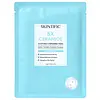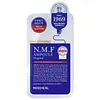What's inside
What's inside
 Key Ingredients
Key Ingredients

 Benefits
Benefits

 Concerns
Concerns

No concerns
 Ingredients Side-by-side
Ingredients Side-by-side

Water
Skin ConditioningPentylene Glycol
Skin ConditioningCeramide EOP
Skin ConditioningCeramide Ns
Skin ConditioningCeramide NP
Skin ConditioningCeramide As
Skin ConditioningCeramide AP
Skin ConditioningArmillaria Mellea Extract
Skin ConditioningEctoin
Skin ConditioningTremella Fuciformis Sporocarp Extract
AntioxidantHydroxyacetophenone
AntioxidantPanthenol
Skin ConditioningSqualane
EmollientGalactomyces Ferment Filtrate
HumectantBifida Ferment Lysate
Skin ConditioningLactobacillus Ferment
Skin ConditioningInulin
Skin ConditioningLactobacillus/Soybean Ferment Extract
Skin ConditioningDipotassium Glycyrrhizate
HumectantCentella Asiatica Extract
CleansingErgothioneine
AntioxidantSodium Hyaluronate
HumectantAllantoin
Skin ConditioningHydrolyzed Sclerotium Gum
HumectantHydrogenated Lecithin
EmulsifyingHydrolyzed Sodium Hyaluronate
Skin ConditioningSodium Acetylated Hyaluronate
HumectantOlea Europaea Leaf Extract
PerfumingAcetyl Glucosamine
Skin ConditioningSodium Polyglutamate
HumectantPaeonia Albiflora Root Extract
Skin ConditioningHydrolyzed Ginseng Saponins
Skin ConditioningWater, Pentylene Glycol, Ceramide EOP, Ceramide Ns, Ceramide NP, Ceramide As, Ceramide AP, Armillaria Mellea Extract, Ectoin, Tremella Fuciformis Sporocarp Extract, Hydroxyacetophenone, Panthenol, Squalane, Galactomyces Ferment Filtrate, Bifida Ferment Lysate, Lactobacillus Ferment, Inulin, Lactobacillus/Soybean Ferment Extract, Dipotassium Glycyrrhizate, Centella Asiatica Extract, Ergothioneine, Sodium Hyaluronate, Allantoin, Hydrolyzed Sclerotium Gum, Hydrogenated Lecithin, Hydrolyzed Sodium Hyaluronate, Sodium Acetylated Hyaluronate, Olea Europaea Leaf Extract, Acetyl Glucosamine, Sodium Polyglutamate, Paeonia Albiflora Root Extract, Hydrolyzed Ginseng Saponins
Water
Skin ConditioningGlycerin
HumectantDipropylene Glycol
HumectantGlycereth-26
HumectantNiacinamide
Smoothing1,2-Hexanediol
Skin ConditioningHydroxyethyl Urea
HumectantCarbomer
Emulsion StabilisingTromethamine
BufferingBetaine
HumectantTrehalose
HumectantPanthenol
Skin ConditioningAllantoin
Skin ConditioningXanthan Gum
EmulsifyingPolyglyceryl-10 Laurate
Skin ConditioningAdenosine
Skin ConditioningPolyglyceryl-4 Laurate
EmulsifyingZeolite
AbsorbentSodium Hyaluronate
HumectantAspartic Acid
MaskingTocopherol
AntioxidantAnastatica Hierochuntica Extract
AstringentSodium Polyacrylate
AbsorbentSodium Chloride
MaskingGlycine
BufferingGlutamic Acid
HumectantSerine
MaskingAlanine
MaskingDisodium EDTA
Ceramide NP
Skin ConditioningSqualane
EmollientAcrylates/C10-30 Alkyl Acrylate Crosspolymer
Emulsion StabilisingArginine
MaskingThreonine
Proline
Skin ConditioningHistidine
HumectantMagnesium Chloride
Calcium Chloride
AstringentDimethylsilanol Hyaluronate
HumectantSodium Acetylated Hyaluronate
HumectantSodium Hyaluronate Crosspolymer
HumectantHydroxypropyltrimonium Hyaluronate
Hydrolyzed Glycosaminoglycans
HumectantHydrolyzed Sodium Hyaluronate
Skin ConditioningHydrolyzed Hyaluronic Acid
HumectantHyaluronic Acid
HumectantParfum
MaskingWater, Glycerin, Dipropylene Glycol, Glycereth-26, Niacinamide, 1,2-Hexanediol, Hydroxyethyl Urea, Carbomer, Tromethamine, Betaine, Trehalose, Panthenol, Allantoin, Xanthan Gum, Polyglyceryl-10 Laurate, Adenosine, Polyglyceryl-4 Laurate, Zeolite, Sodium Hyaluronate, Aspartic Acid, Tocopherol, Anastatica Hierochuntica Extract, Sodium Polyacrylate, Sodium Chloride, Glycine, Glutamic Acid, Serine, Alanine, Disodium EDTA, Ceramide NP, Squalane, Acrylates/C10-30 Alkyl Acrylate Crosspolymer, Arginine, Threonine, Proline, Histidine, Magnesium Chloride, Calcium Chloride, Dimethylsilanol Hyaluronate, Sodium Acetylated Hyaluronate, Sodium Hyaluronate Crosspolymer, Hydroxypropyltrimonium Hyaluronate, Hydrolyzed Glycosaminoglycans, Hydrolyzed Sodium Hyaluronate, Hydrolyzed Hyaluronic Acid, Hyaluronic Acid, Parfum
Ingredients Explained
These ingredients are found in both products.
Ingredients higher up in an ingredient list are typically present in a larger amount.
Allantoin is a soothing ingredient known for its protective and moisturizingg properties. Because of this, it is often added to products with strong active ingredients.
Studies show higher concentrations of this ingredient can promote wound healing.
Though it can be derived from the comfrey plant, allantoin is produced synthetically for cosmetic products to ensure purity.
Learn more about AllantoinCeramide NP is a type of ceramide and formally known as ceramide 3.
Ceramides are intercellular lipids naturally found in our skin that bonds dead skin cells together to create a barrier. They are known for their ability to hold water and thus are a great ingredient for dry skin.
Ceramides are an important building block for our skin barrier. A stronger barrier helps the skin look more firm and hydrated. By bolstering the skin ceramides act as a barrier against irritating ingredients. This can help with inflammation as well.
If you would like to eat ceramides, sweet potatoes contain a small amount.
Read more about other common types of ceramides here:
Ceramide AP
Ceramide EOP
This ingredient is created by putting sodium hyaluronate through hydrolysis.
You might know this as 'mini' or 'ultra low-molecular weight' hyaluronic acid. The small molecule size means it is able to travel deeper in the skin.
According to studies, low molecular-weight hyaluronic acid can:
One study from 2011 found ultra-low weight HA to show pro-inflammatory properties. Another study from 2022 found it to downregulate UV-B induced inflammation.
Hydrolysis is a process of changing a molecule using water or enzymes.
This ingredient is water-soluble.
Learn more about Hydrolyzed Sodium HyaluronatePanthenol is a common ingredient that helps hydrate and soothe the skin. It is found naturally in our skin and hair.
There are two forms of panthenol: D and L.
D-panthenol is also known as dexpanthenol. Most cosmetics use dexpanthenol or a mixture of D and L-panthenol.
Panthenol is famous due to its ability to go deeper into the skin's layers. Using this ingredient has numerous pros (and no cons):
Like hyaluronic acid, panthenol is a humectant. Humectants are able to bind and hold large amounts of water to keep skin hydrated.
This ingredient works well for wound healing. It works by increasing tissue in the wound and helps close open wounds.
Once oxidized, panthenol converts to pantothenic acid. Panthothenic acid is found in all living cells.
This ingredient is also referred to as pro-vitamin B5.
Learn more about PanthenolSodium Acetylated Hyaluronate is a type of Hyaluronic Acid.
Hyaluronic Acids help moisturize, soothe, and protect the skin.
Read about common types of Hyaluronic Acid here:
Sodium Hyaluronate
Hydrolyzed Hyaluronic Acid
Hyaluronic Acid
Sodium Hyaluronate is hyaluronic acid's salt form. It is commonly derived from the sodium salt of hyaluronic acid.
Like hyaluronic acid, it is great at holding water and acts as a humectant. This makes it a great skin hydrating ingredient.
Sodium Hyaluronate is naturally occurring in our bodies and is mostly found in eye fluid and joints.
These are some other common types of Hyaluronic Acid:
Learn more about Sodium HyaluronateSqualane is an emollient that helps the skin hold onto moisture. It's an oily liquid that occurs naturally in certain types of fish and plant oils.
Because squalane boosts hydration in the skin, it also comes with plenty of benefits: it is an antioxidant and can help fight free radicals and skin damage. Squalane is also found to have a detoxifying effect when applied.
Squalane comes from squalene, which occurs naturally within the sebum of our skin. It is one of the oils our skin produces to keep itself hydrated. Squalane is the hydrogenated version of squalene and has a longer shelf life.
Research shows that squalane is non-irritating (even at 100% concentration).
In general, it's a fantastic ingredient. It does a great job at hydrating the skin, and it's suitable for those with sensitive skin.
The source of squalane may impact malassezia / fungal acne. This is because olive oil derived squalane can contain impurities such as fatty acids and plant waxes. Sugarcane derived squalane is recommended for anyone with malassezia concerns.
Is squalane vegan?
This depends on the source. Squalane can be derived from both plants and animals. Most squalane used in skincare comes from plants.
Please note: the source of squalane is only known if disclosed by the brand. We recommend reaching out to the brand if you have any questions about their squalane.
Read more about squalene with an "e".
Is squalane an oil?
Squalane is often called an oil, but it’s technically not; it’s a hydrocarbon, meaning it’s only made of carbon and hydrogen, unlike true oils which are triglycerides made of fatty acids and glycerol.
The term “oil-free” isn’t regulated, so companies can define it however they want. Some exclude all oils, while others just avoid mineral oil or comedogenic oils.
While some people avoid oils thinking they cause breakouts, the right kind of oil (or oil-like ingredient like squalane) can actually help balance and hydrate your skin. It’s worth testing out simple oils or squalane to see what works best for your skin.
Learn more about SqualaneWater. It's the most common cosmetic ingredient of all. You'll usually see it at the top of ingredient lists, meaning that it makes up the largest part of the product.
So why is it so popular? Water most often acts as a solvent - this means that it helps dissolve other ingredients into the formulation.
You'll also recognize water as that liquid we all need to stay alive. If you see this, drink a glass of water. Stay hydrated!
Learn more about Water